- It’s we what do
- Cairns To Darwin
- Triumph 900 GT Pro
- Solo Mission: Weekend Blast To Bundarra
- Husqvarna 701 Enduro LR
- Two Heads Are Better Than One
- Adventurous Encounter
- GS Safari Is Go!
- Suzuki V-Strom 1050
- Lyndon Poskitt
- A Touch Of Paradise
- For Some Reason (FSR)
- Carrying Extra Fuel
- Paper Chase
- Andy Strapz Thermalz
- The Bag Lady with Mike Ferris
- Mechanical Sympathy with Miles Davis
- Lockdown Lowdown with Andy Strapz
- Karen’s Lockdown Highs And Lows with Karen Ramsay
- Checkout
- Fit Out
Jodie Box discovered a grain of truth behind an old joke on a pillion ride through Tasmania.

By 5.00am we were off the mighty Spirit Of Tasmania and on the open roads leading out of Devonport.
Despite it being summer we were welcomed by heavy rain clouds that stayed hot on our heels for the whole day. Apparently Tasmania doesn’t care too much for what Victorians think the seasons should be.
It didn’t take long to realise the landscape of Tasmania changes with the blink of an eye. We rolled through rich, deep-red soil and found ourselves in marginal sheep-grazier country within the rise of a hill.
Heading south, toward the central highlands, we stumbled upon the Waddamana Hydro-Electric Power Station and museum. Hidden away along a dirt road, the grand old building was home to the first hydro station in the southern hemisphere, built back in the early 1900s. Run by volunteer staff, the plant is manned seven days a week and is well and truly worth a visit. Even if you’re not a hydro power aficionado,the sheer size of the old operation is quite a sight.
Nearing the end of the first day we trundled on to Lake Gordon.
If for some unearthly reason the mood strikes you, you’re able to abseil from the top of the Lake Gordon dam wall, which, at 140 metres high, is the tallest in Australia.
A stone’s throw from Lake Gordon was Lake Pedder, and there we called it a night after a final 100km in the rain.
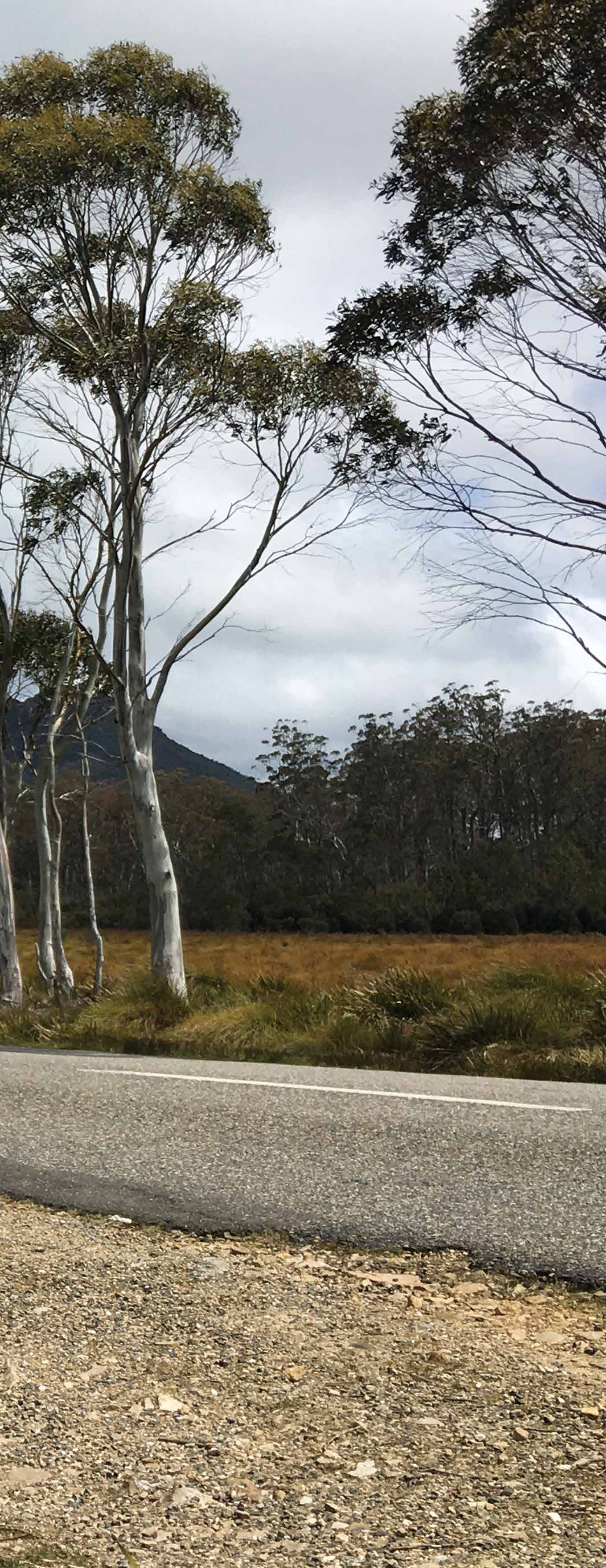 Author Jodie jumped at the chance for a pillion tour of Tasmania with father Robin
Author Jodie jumped at the chance for a pillion tour of Tasmania with father Robin
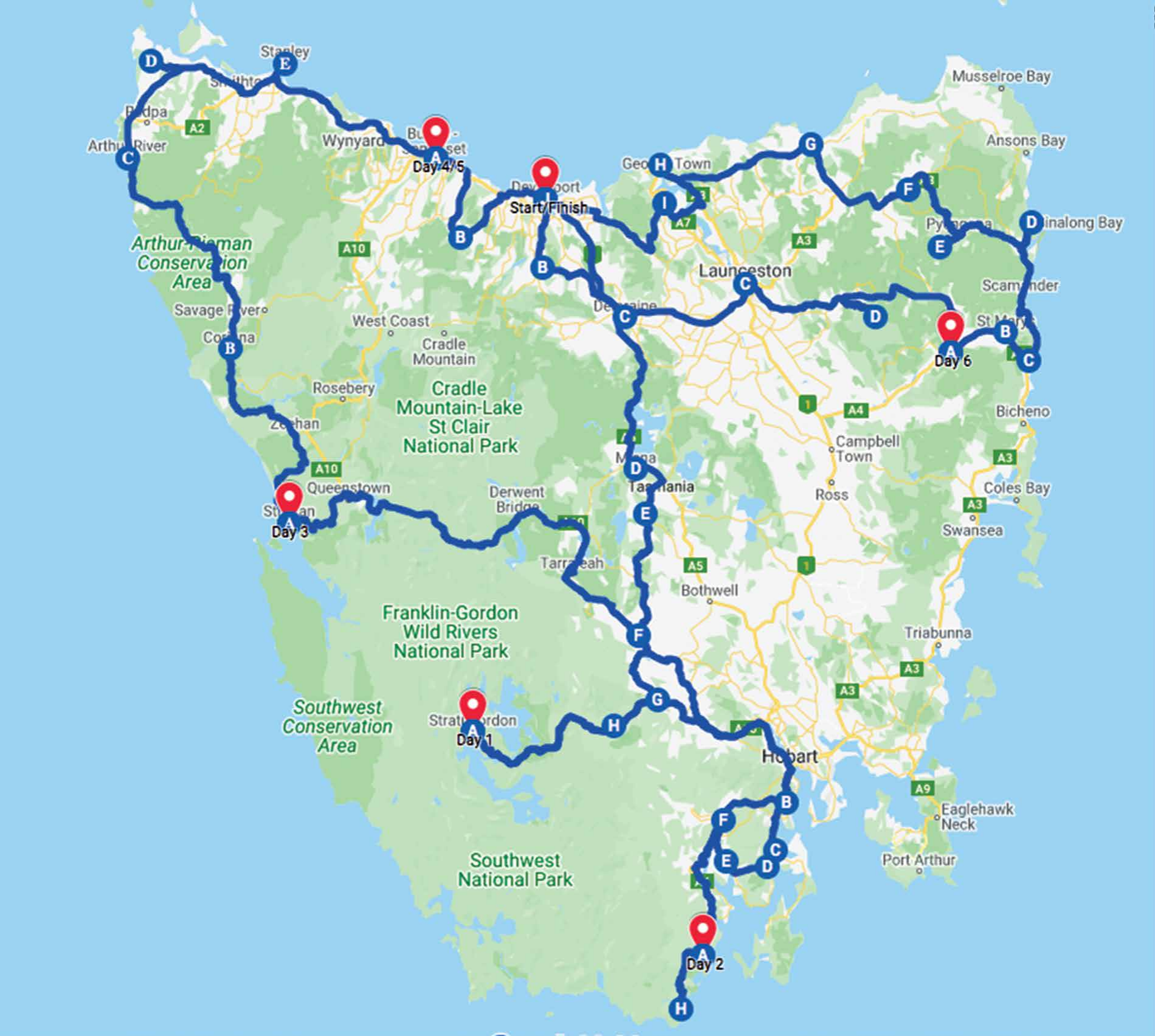
Strathgordon to South Port
Heading out of the bush and scrub and into Hobart, we popped into MONA (Museum of Old and New Art) for a quick visit which was, how do I put this…eye opening. I won’t say too much more about MONA except that if you think you know what an art gallery or a museum is, think again.
Oh. And the exhibitions start 13 metres below the entrance to the museum.
All that culture worked up quite an appetite, so we stopped at Franklin for some well-earned fish and chips before motoring on toward Cockle Creek and the southernmost road in Australia.
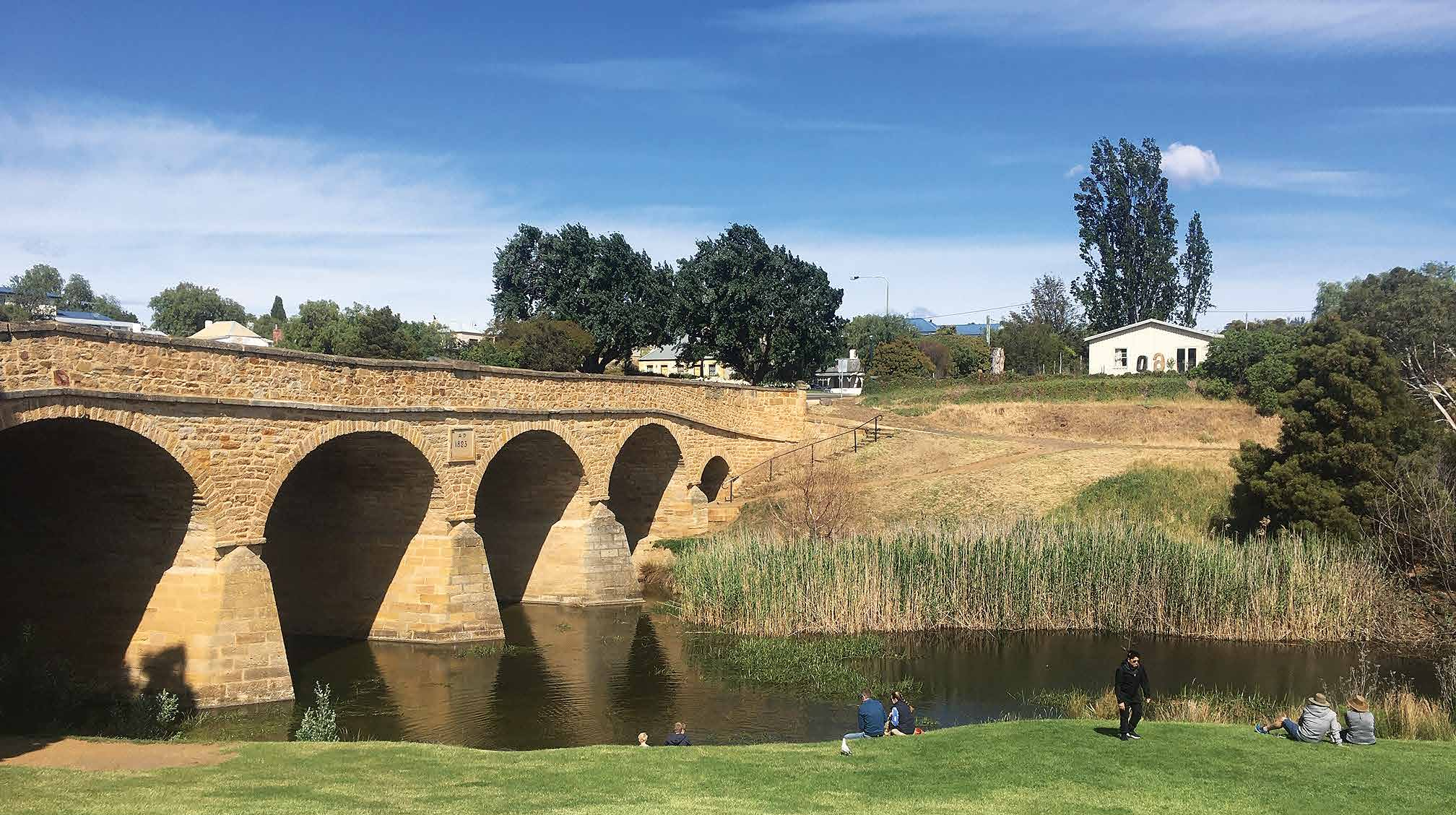 The Richmond Bridge. Still in use some 200 years after it was built.
The Richmond Bridge. Still in use some 200 years after it was built.
The end of the road leads to a brass sculpture of a southern right whale, representing the whale-oil industry that developed Cockle Creek into a town during the 1800s. The pace of life down there is relaxed to say the least, well and truly reflected in a big old pet dog that wouldn’t even bat an eyelid – let alone leave the middle of the road – as the bikes passed.
What a life.
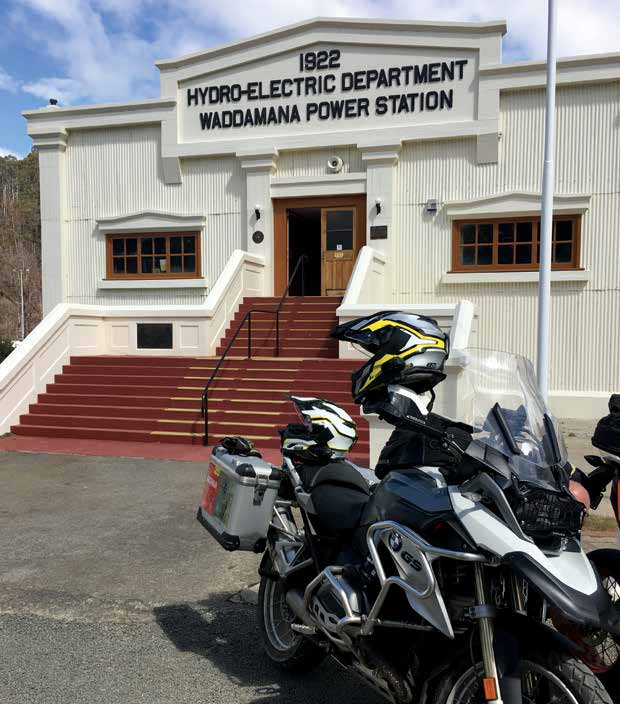 Waddamana Hydro-Electric Power Station and museum. The grand old building was home to the first hydro station in the southern hemisphere.
Waddamana Hydro-Electric Power Station and museum. The grand old building was home to the first hydro station in the southern hemisphere.
South Port to Strahan
Turning back toward the north and then west like some kind of disoriented rabbit zigzagging here and there, we started making our way down to Strahan. The route took us over the Richmond Bridge, the oldest stone-arch bridge in Australia.
Construction started in 1823 to allow wheat growers to transport grain carts across the Coal River and it’s still in use today, with a 25-tonne load limit, some 200 years later.
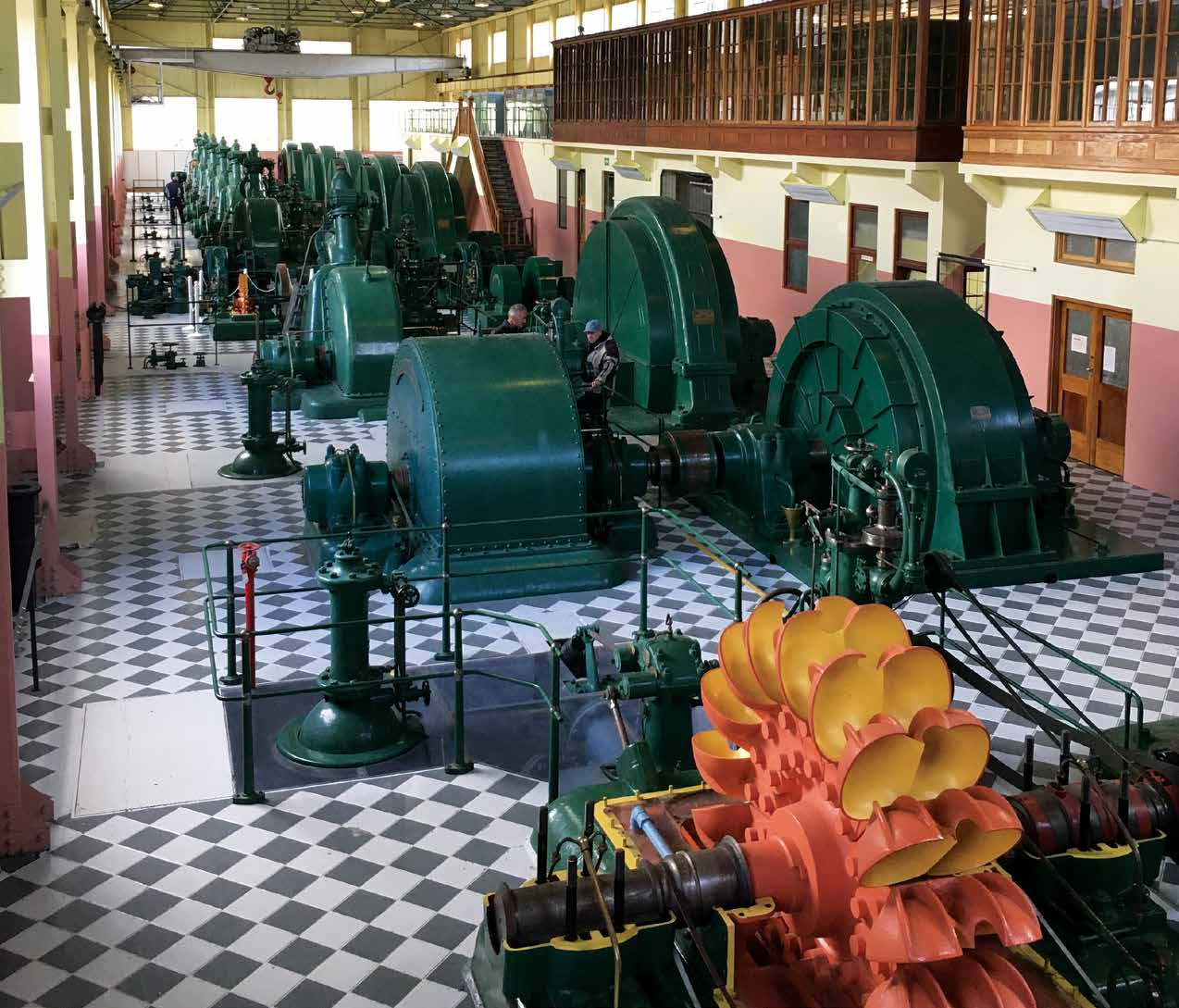 Even if you’re not a hydro power aficionado, the sheer size of the Waddamana operation is quite a sight.
Even if you’re not a hydro power aficionado, the sheer size of the Waddamana operation is quite a sight.
Passing the hand-carved, 100-metre-long Wood Wall crafted from slabs of Huon pine that depicts the vast history of West Tasmania, and not far from the Derwent Bridge, tucked away behind a temperate little rainforest full of running streams, is Nelson Falls. It’s a lovely little retreat when the Tassie sun decides to come out and the riding suit is getting a touch warm.
Heading on toward Queenstown we were greeted with a white sign on the side of a mountain much like in Hollywood, although this was where the similarities between the two places quickly ended. Due to the extensive copper mining and logging during the early 1900s, what was once the world’s richest mining town is now a moonscape hill range. Coming down the hills through 90 or more bends and corners – yes. I counted – into town is quite surreal and makes a stark a reminder of the town’s industrial history.
As the day drew to a close we rolled into the small coastal village of Strahan.
Situated on the edge of Macquarie Harbour, the town is the entrance to the Franklin-Gordon Wild Rivers National Park,
and also home to nearby Sarah Island, once a notorious convict prison.

Strahan to Burnie
As I’d learned was typical of Tasmania, we left Strahan in the pouring rain and made our way to the old silver-mining town of Zeehan.
Once upon a time Zeehan was the third-largest city in Tasmania, but it’s now a small rural town that, like many on the west coast, is reinventing itself into an historic landmark. It’s also a perfect spot to grab a cup of coffee before winding up to the remote village of Corinna.
Corinna was once a prosperous mining town and is now an eco-tourism destination complete with accommodation and a lovely little pub. Getting across to Corinna means paying the ferryman – or remaining stuck on one side of the Pieman River while everyone else heads off for lunch.
A trundle down the Western Explorer Road took us across some dense forest and exposed plains that crossed the path of the Roaring 40s and had us leaning heavily into the gale-force wind. As well as being Australia’s largest dairy operation, Woolnorth is home to Tasmania’s first wind farm, which, after riding through the area, made a whole lot of sense.
The final stop before Burnie was Table Cape.
If you’re around the Table Cape area from the end of September to the end October you’ll be able to catch the Table Cape Tulip Farm in full bloom. The hectares and hectares of tulips fill the coastal paddocks and their bright flowers sit against the horizon of the Pacific Ocean.
It was a picturesque way to finish the day.
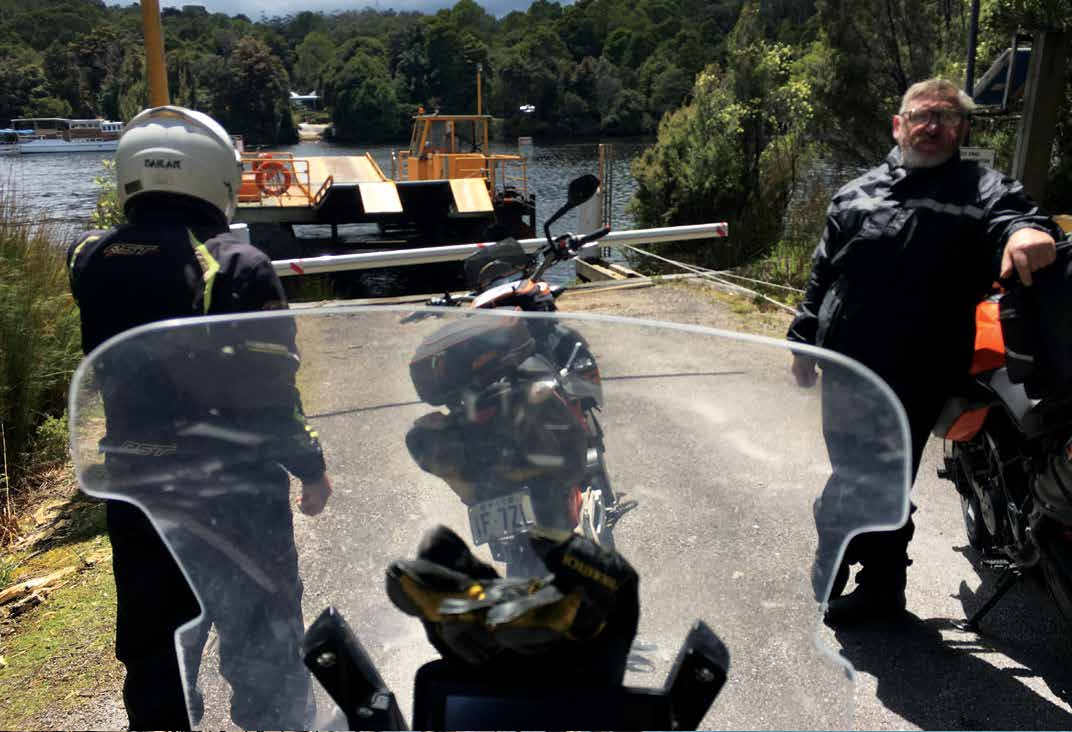 Getting to Corinna means paying the ferryman – or remaining stuck on one side of the Pieman River while everyone else heads off for lunch.
Getting to Corinna means paying the ferryman – or remaining stuck on one side of the Pieman River while everyone else heads off for lunch.
Burnie to Fingal
Although it was only a relatively short day of 350km, the trip between Burnie and Fingal was full of sights which deserved a really good look, and top of the list were the Gunns Plains Caves.
Just south of Burnie, the caves are simply spectacular.
They were formed by an underground stream that still flows today, and is home to giant freshwater lobster, fish, eel and occasionally even a platypus. Tours are available through the spectacular caverns, and a place so unique deserves an expert guide.
 A sign of experience at the Pieman River ferry.
A sign of experience at the Pieman River ferry.
Once in Launceston we headed straight for the National Automobile Museum of Tasmania.
For me a motor museum wouldn’t usually be my first port of call, but the impressive presentation and sheer number of cars and bikes on display meant there was something to pique everyone’s interest. The impressive line up showcased everything from Australian muscle cars to a 1951 Vincent Black Lightning, the most expensive motorcycle to ever sell at auction, going for a cool $1.16million.
We wound our way up to the plateau of the Ben Lomond National Park, seemingly sitting above the clouds at 1500 metres.
The weather changeability that was so common throughout Tasmania was heavily amplified at the Jacobs Ladder lookout. What was sunshine when we arrived quickly turned to fog and rain as the change of weather could be seen enveloping the entirety of the mountain peak in a matter of seconds. And getting to the lookout via Jacobs Ladder is a feat in itself. Its tight, gravel hairpins kept everyone on their toes. Each corner is skirted by piles of dolerite rocks that have fallen and created boulder fields at the bottom of the mountain, and my advice as a passenger is don’t look down until you are safely to the top!
Riding back down from the peak of the Ben Lomond National Park revealed a vast range of wildlife going about its business.
The most common appeared to be the echidna that, based on the number we saw, may outnumber people in Tasmania.
 The impressive presentation at the National Automobile Museum of Tasmania included a 1951 Vincent Black Lightning, the most expensive motorcycle to ever sell at auction.
The impressive presentation at the National Automobile Museum of Tasmania included a 1951 Vincent Black Lightning, the most expensive motorcycle to ever sell at auction.
Good taste
As the sunlight began to fade behind the mountain ranges we made our way to the Bed In A Shed in the quiet town of Fingal.
Started by two mainlanders, Darren and Louise, after a lap or two around Tassie while on holiday, the accommodation is set up with motorcyclists in mind. Beloved steeds can rest safely in a garage all night while riders catch some much-needed rest.
Possibly the most needed thing at the end of a day on the bike is a nice, home-cooked meal, and if you swing by Chelle’s Place in Fingal that’s exactly what you’ll get – and in a big way. It’s possibly the first time in my life I’ve been scared of the amount of food I was going to have on my plate as I saw the sheer size of meals.
My fear both peaked and subsided as I was presented with a burger not only nearing the size of my head, but which was also absolutely delicious.
 Chelle’s Place in Fingal presented a burger nearing the size of the author’s head, but which was also absolutely delicious.
Chelle’s Place in Fingal presented a burger nearing the size of the author’s head, but which was also absolutely delicious.
Fingal to Devonport
The last day on the island was filled with blue skies and plenty of open road to guzzle up before getting to Devonport that night to set sail back to Victoria.
The first lot of winding roads down through St. Marys warmed up both riders and tyres for the final day ahead.
We travelled along the east coast to picturesque Binalong Bay, paying a visit to the Bay of Fires.
St Columba Falls in the rural region of Pyengana was a must-see and wasn’t situated too far off the Tasman Highway.
The falls are hidden away through dense, towering tree ferns and trickling steams, and the waterfall itself, at 90 metres, is one of the highest in Tasmania. St Columba Falls hasn’t been seen without water flowing over its rock ledges since its discovery.
The final stop before boarding the Spirit Of Tasmania was Low Head Lighthouse.
The original lighthouse was built in 1833 and, at the time, was Australia’s third. The structure which sits there today was rebuilt in 1888 and is the country’s oldest continuously operated pilot station. Often little visitors to the Low Head Lighthouse can be seen coming up from the shore or hiding among the shrubbery during breeding season. The little locals are the Blue Penguins or Little Penguins that make their way from the shores to build nests and lay eggs in the area surrounding the lighthouse.
 Low Head Lighthouse, rebuilt in 1888 and the country’s oldest continuously operated pilot station.
Low Head Lighthouse, rebuilt in 1888 and the country’s oldest continuously operated pilot station.
Two good
There’s an old myth about our Apple Isle counterparts having two heads. It’s not always well received, but I’ve found since visiting Tassie as a pillion that there may well be an evolution-ary explanation: there’s too much to look at for one set of eyes.
If you truly want to discover the Island State for all it has to offer I can recommend two options:
* Grow a second head (this takes considerable time and effort and is not recommended); or
* DIY a second head by taking a pillion passenger (highly recommended).
With the second option you’ll begin to get a true view of everything Tassie has to offer.
Take my word for it. Tassie definitely deserves a second pair of eyes.
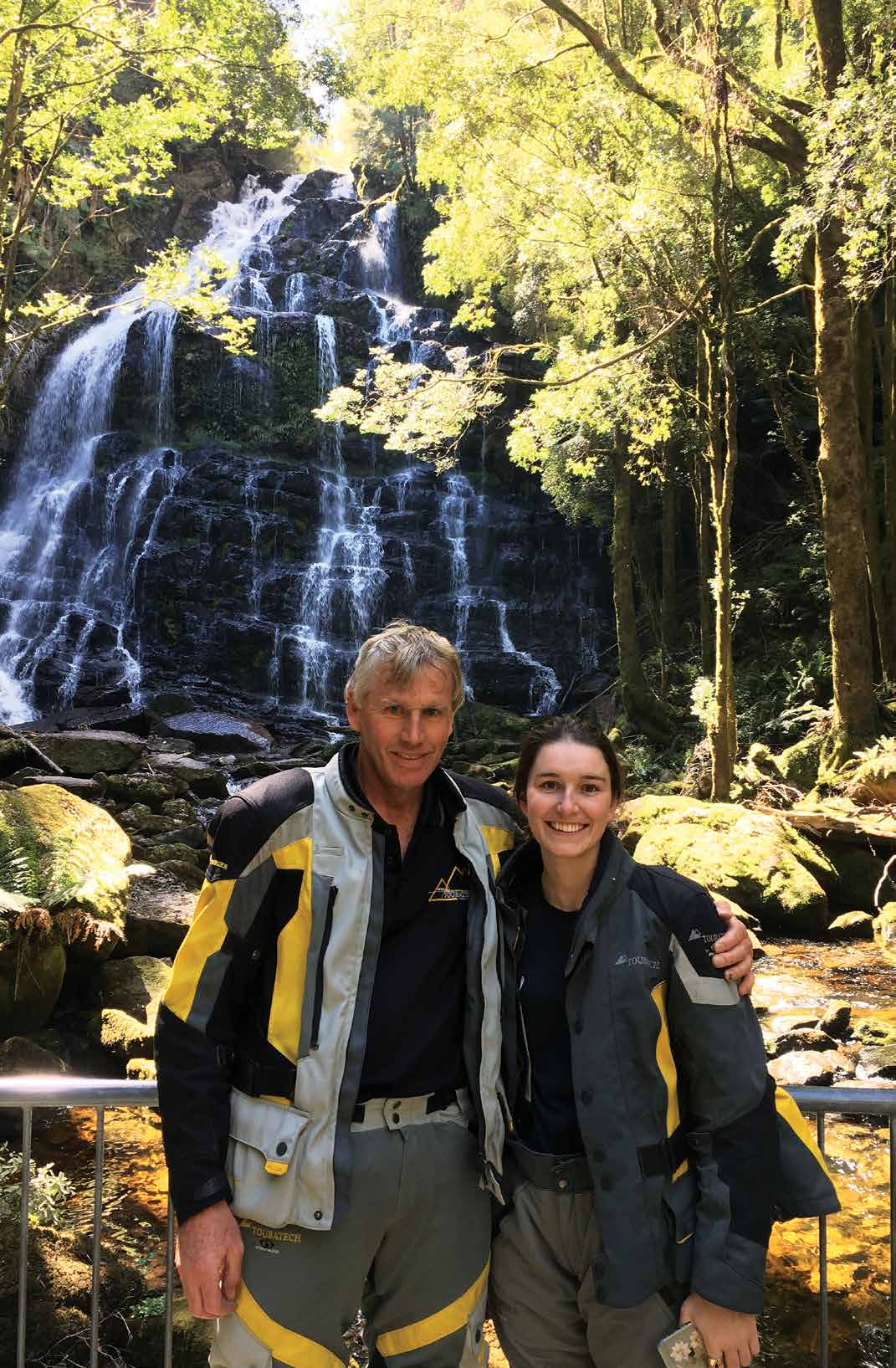

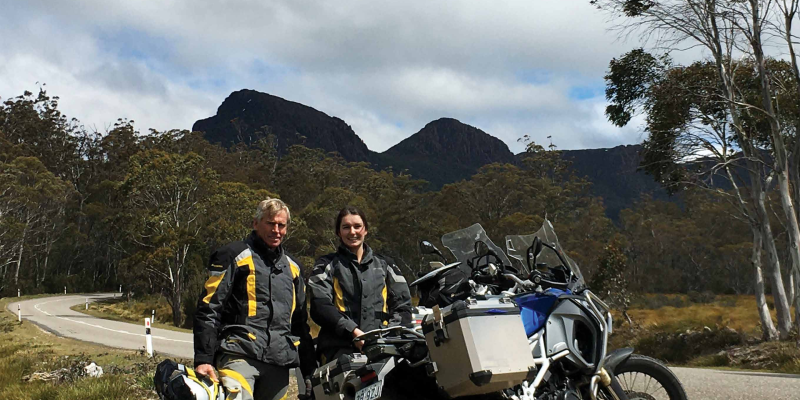

















Comments